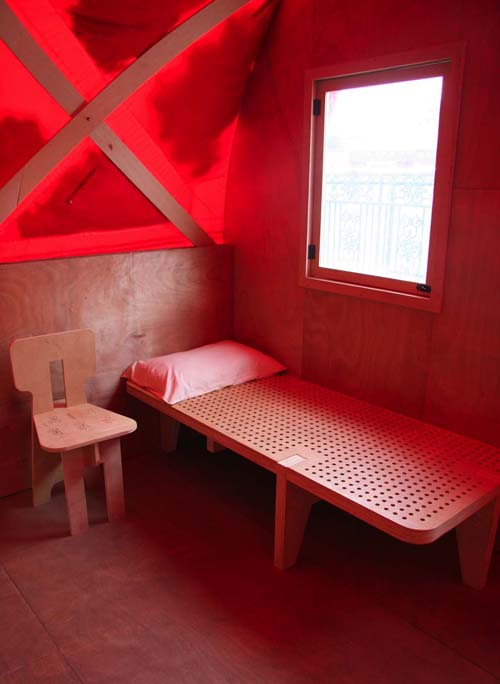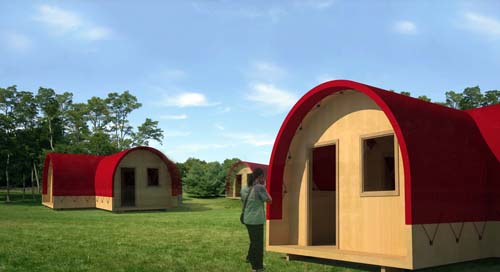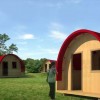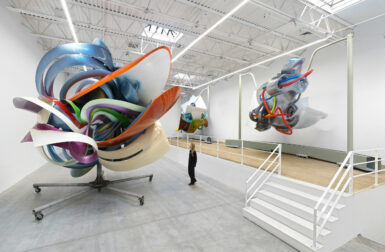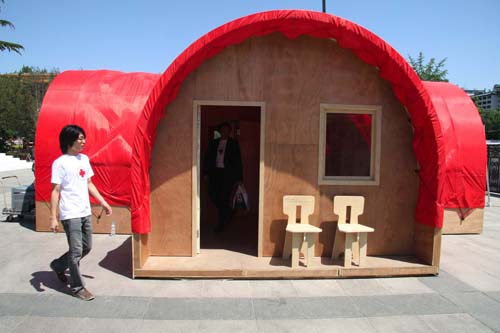
RED+HOUSING by OBRA is an emergency housing prototype which was constructed full-scale and opened in an exhibit at the National Art Museum of China in May. It was a selected project in the AA | FAB competition and will be included in an exhibit organized in London in September.

Architecture on the Edge of Survival involves the development of an original prototype of emergency housing for future potential deployment in areas of natural or man-made disaster anywhere in the world. Emergency housing from the point of view of design is only an extreme form of architecture. Its context is that of almost unsustainable conditions, and its object, the creation of an environment we can inhabit temporarily while living on the edge.
Red+Housing is proposed with the knowledge that, when living on the edge of survival, action needs to be decisive and precise. By definition, an emergency will arise suddenly and demand fast response, but the immediate actions we take can have long-term consequences.
Red+Housing proposes an approach that tries to incorporate both the advantages of fast-response solutions, such as the deployment of military tents, with those of slower and more considered responses such as neighborhood reconstruction efforts involving local traditions and user construction.
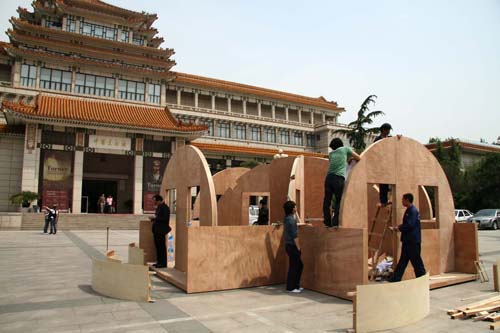
The design has been developed as an in-progress embodiment of the following 10 Points of Architecture on the Edge of Survival.
1. Universal Application
This prototype aspires to universal applicability. Its development contemplates a series of simple modifications that would make it a useful solution anywhere in the world: add insulation and a stove for cold climates; remove doors and windows for tropical climates; replace materials according with local availabilities, etc.
2. Effective Performance
The project makes economical use of materials by enlisting the structural strength of post-tensioning. The bamboo plywood strips of the dome support the enclosure, with the same force with which a bow propels an arrow into the sky.
3. Economical
The project proposes the use of locally available low-cost materials. The materials are always replaceable and are chosen for their performance rather than appearance. When working in different locations materials which become exotic can be replaced with ones that are locally abundant.
4. Transportable
All parts are collapsible to flats and can therefore be easily packed and transported.
5. Ease of Assembly
All connections are a simple friction bond of male/female parts which are then secured with a minimum of fasteners.
6. Renewable Materials
In China the project is proposed almost entirely in bamboo plywood, one of earth’s most renewable of materials. The cover fabric can also be considered as woven out of waterproof bamboo fibers.
7. Digitally Pre-fabricated
Digital pre-fabrication makes the project economical in its speed of production and also easy to assemble due to the precision of its fabrication.
8. Open Work
The cruciform house, while iconic, retains in its biaxial symmetry a certain ‘indifference’ that allows its easy recombination with other locally and diversely made structures.
9. Urban/Rural
The geometry of the crosses, when deployed together in groups, defines in-between spaces of infinite flexibility that can suggest an ‘urban’ context for a field of houses. Likewise, if a house is erected by itself, the exterior of the cross creates spaces that mediate between interior and exterior providing a context for people to spend time outside.
10. Flexibility of Use
The geometry of the cross allows the inhabitation of the house as either 1, 2, 3, or 4 different units of housing.
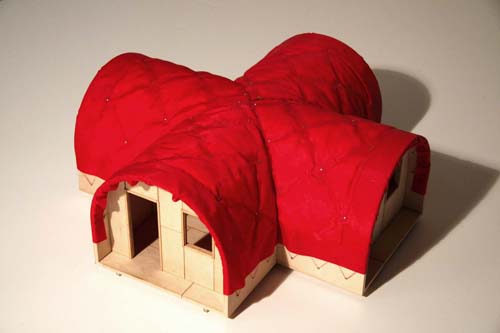
OBRA Architects Project Team: Shin Kook Kang, Project Architect
Atsushi Koizumi, Sihyung Lee, Sara Kim, Orla Higgins, Michel Dinis




